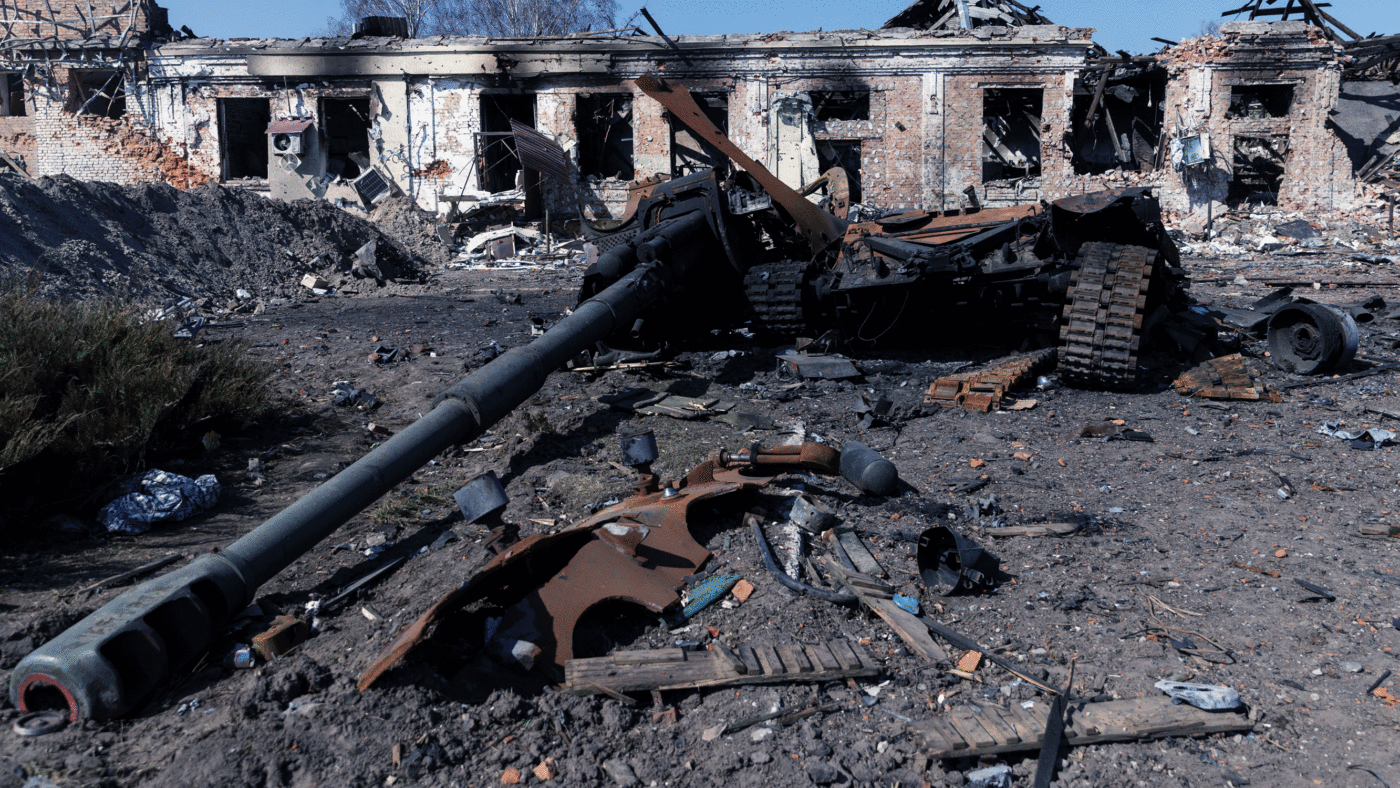The Russian army reached a ‘point of culmination’ on around March 20. This meant that with the available supplies and reserves, it could make no further significant advances. Local actions, such as its effort to take Mariupol, continue. But on all major fronts, Russia’s advance has been largely held by ferocious and competent Ukrainian resistance. Russia has hundreds of thousands of reserves, but very few have been mobilised and neither they nor their equipment are in any way combat-ready.
Russia has stalled – and Vladimir Putin is reported to have redefined Russia’s main goal as ‘the liberation of Donbas’. This is the region in the east of Ukraine where fighting has been continuing since 2014 and where two breakaway pro-Russian republics were recognised by the Russian president two days before the invasion. The chief of Ukrainian military intelligence, Kyrylo Budanov, said on March 27 that Putin will try ‘to pull the occupied territories into a single quasi-state structure and try to pit it against Ukraine’.
There is always the possibility of deception – but, for the first time in an incoherent and incompetently executed war, the Russian army will have a focus. This will be centred on what the Ukrainian military calls the ‘joint forces operation’ in the Donbas.
Putin is said to want a Korea scenario – a divided country with newly ‘liberated’ areas in the south and east. This would provide some kind of link with one of his originally stated objectives, but plainly means ditching the others of eliminating the Ukrainian state and its armed forces.
Where then does the war go from here? Until now, Russian forces have been conducting three largely separate operations: around Kyiv in the north, centred on Kharkiv in the east and currently focused on Mariupol in the south. In the absence of any evident central command, these efforts have been competing against each other for ever-dwindling supplies.
Now Russian forces are likely to continue to pressurise Kyiv, but not try to take it. They will continue their criminal assaults on civilians there and in other Ukrainian cities. In the east, they will try to hold what they have, to provide leverage for negotiations. In doing so, the Russians will attempt to damage the Ukrainian army so badly they cannot reinforce the south and especially the Donbas.
How the two sides now measure up
The challenge for Ukraine will be to continue the fight in the joint forces operation area, hold the Russians off and perhaps retake ground where they can, probably around Kyiv and in parts of the south.
The challenge for the Russians is even more formidable. Since the beginning of the war, and probably long before, US military and intelligence agencies have been planning for a transition from war to a more comprehensive national resistance. On the front lines, Russian forces will receive reinforcements, especially from the April 2022 draft of conscripts, who were called up early. These new troops, when they do arrive in a few months, are unlikely to constitute effective, cohesive units. It remains to be seen whether Russia can replace its losses in men and military hardware.
Russian soldiers, as they always do, will begin to adapt. But Ukraine’s armed forces will continue to benefit – as Russia’s will not – from ever better training and weaponry supplied by a newly revitalised Nato. In addition, Ukraine’s forces have shown a considerable edge in their military culture, notably using ‘mission command’. This means empowering and trusting junior leaders to carry out commanders’ orders and use their initiative. This is vital in a fast-flowing combat environment. Russia’s traditional top-down military approach cannot compete with that.
The Ukrainian military’s ability to innovate has also been important, allowing for aggregation of small, new and effective capabilities. Behind the lines, Ukraine’s partisans will continue to take a severe toll on Russian forces. As the British and US saw in Iraq, even when largely unsupported by outside powers, this kind of war can be brutally effective.
New thinking
Nato has applied the lessons of Iraq to develop new thinking on setting up effective resistance forces against Russian forces. For some time Ukrainian, US and other intelligence agencies will have been identifying and supplying the territorial defence leaders behind Russian lines, and they have been effective in disrupting Russian supply lines and logistics.
Should Ukraine be split as Putin plans, this will not be a frozen conflict, as Korea is. Nor will it resemble Abkhazia or Chechnya, uneasy though they both remain, under the control of a Russian puppet Ramzan Kadyrov in Chechnya and military occupation in the breakaway Georgian region. Even Afghanistan in the 1980s will pale in comparison.
From 1807 to 1814 on the Iberian peninsula, Napoleon had to fight Spanish, Portuguese and British armies while beset by ubiquitous, ferocious insurgents. He described this war as his ‘bleeding ulcer’, draining him of men and equipment. It is the west’s aim to make Ukraine for Putin what Spain was for Napoleon.
In the absence of a negotiated settlement, Ukraine and Nato will continue to grind away at Russia’s army, digging away at that bleeding ulcer and prolonging Russia’s agony on the military front, as the west continues its parallel assault on its economy. If Putin’s plan is to proceed with the Korea model, he will fail. There is a strong possibility that Putin has only a limited idea of how badly his army is faring. So be it – he’ll find out soon enough that there is now no path for him to military victory.![]()
This article is republished from The Conversation under a Creative Commons license. Read the original article.
Click here to subscribe to our daily briefing – the best pieces from CapX and across the web.
CapX depends on the generosity of its readers. If you value what we do, please consider making a donation.


